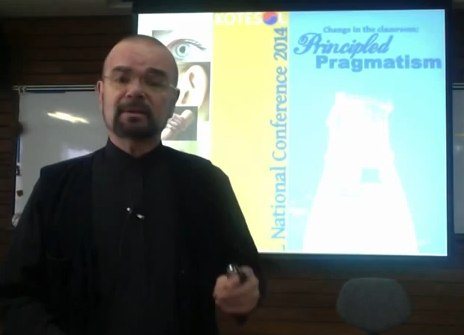
A preview of Prof. Marc Helgesen's plenary presentation ‘Language Learning and the Senses’ at the 2014 KOTESOL National Conference held at Global Plaza (Kyungpook National University Campus) in Daegu, South Korea May 31, 2014.
Language Learning and the Senses
Teaching English means more than knowing about English and ELT. It includes knowing how we teach and knowing who we are – in relation to the way our students learn. That includes sensory awareness. Barring a disability, we all have the five senses. Every bit of information we take in comes through sight, hearing, touch/movement, smell, or taste. Why then are classes often limited to visual (Look at page 35.) and auditory input (Listen!)?
We have sensory preferences (de Jong et al., 2009). That doesn't mean, of course, that we should try to teach each student only through their main sense. That isn't practical or even desirable. Rather, we need to teach all students through many different senses. Students who get multi-sensory input learn more. In controlled experiments, learners who experience multi-sensory come up with 50-75% more creative solutions in problem solving tasks (Mayer, 1997). Even something as simple as presenting information visually doubles recall compared to oral presentation. Think about that next time you "give a lecture." Multi-modality presentation doubles that result again (Najjar, 1998, in Medina, 2008)
This activity-based session will explore sensory modalities. This includes some surprises. Of course, some information lends itself to one sense over the others. But often senses overlap. And all things are not equal – most of the time, "visual" trumps everything else (so why are/do we spend so much time standing at the front of the room talking?).
Participants will experience a range of activities and will receive a handout showing how to modify classroom activities for listening, speaking and reading to include a wider range of sensory input. It really does make sense!
see more about the conference at http://koreatesol.org/nc2014


